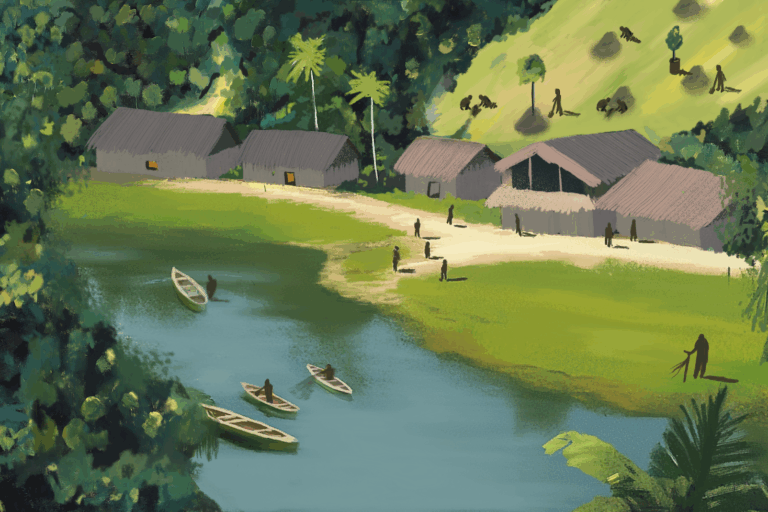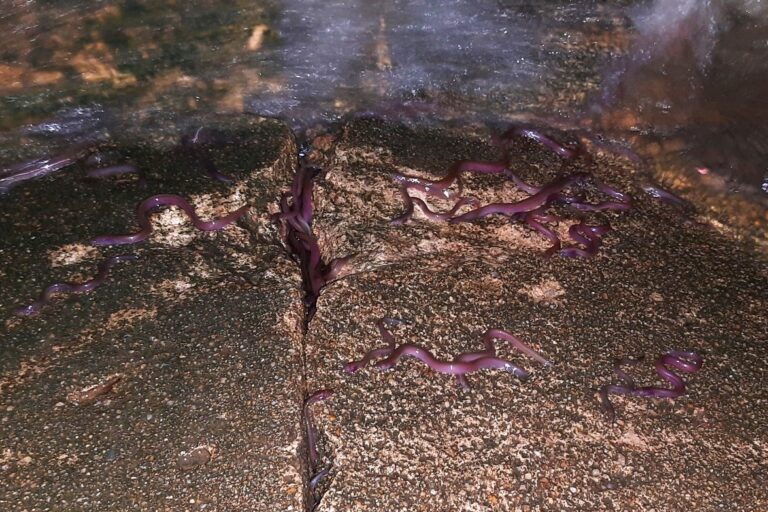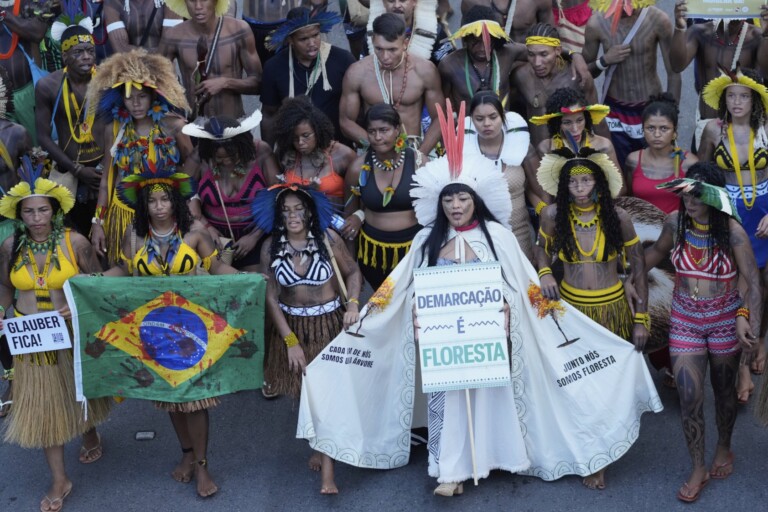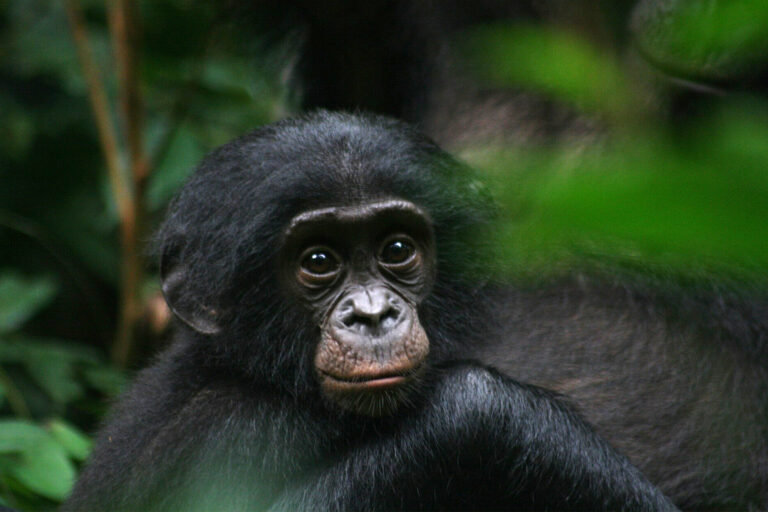- An exclusive study shows that 114 properties have been certified inside indigenous territories awaiting demarcation in the Brazilian Amazon, spurred in large part by a recent statute that leaves these reserves unprotected from such illegal land grabs.
- The certified lands span more than 250,000 hectares (620,000 acres) inside indigenous territories, some of them authorized before FUNAI, the agency for indigenous affairs, issued the statute allowing registry on unratified lands.
- Landowners have already registered claims for more than 2,000 private properties in indigenous areas inside the Amazon, including areas that are home to isolated peoples.
- Indigenous groups, civil society organizations, the Federal Public Prosecutor’s Office and state prosecutors have denounced the statute and are challenging it in various courts.
The administration of President Jair Bolsonaro has legitimized more than a hundred farms established illegally inside indigenous territories in the Brazilian Amazon, most of them certified following a recent rule change.
That was the finding from an unprecedented study by the investigative reporting outlet Agência Pública, which puts the combined area of indigenous lands occupied in this way at 250,000 hectares (620,000 acres), or about the size of Luxembourg. Meanwhile, Bolsonaro has not ratified a single new indigenous territory since taking office at the start of 2019.
Indigenous territories are theoretically protected from land grabs such as these under a 2012 statute of FUNAI, the federal agency for indigenous affairs. This protection extends to unratified indigenous lands, which are those awaiting a presidential decree as the last step in the demarcation process for official recognition.

But since the start of the administration up until April 22, the federal government approved certification for 42 farms through the land management system SIGEF, despite the fact that they overlap onto unratified indigenous lands.
Then, on April 22, FUNAI issued a new statute authorizing the certification of private properties inside unratified indigenous areas, and that number surged: 72 new certifications were authorized in less than a month — an average of two per day.
Landowners are required by law to register their properties on the SIGEF system run by the National Institute for Colonization and Agrarian Reform (INCRA). Without the certification, they are unable to register their land at local registrars, get legal financing, or request licenses for projects like construction of hydroelectric dams or mining.
Under FUNAI’s new statute, the 237 indigenous territories currently under the demarcation process in Brazil are no longer protected from registration of private properties. They have also lost the protection granted to areas formally claimed by indigenous groups, including those with restricted-use ordinances because of isolated groups living on them, and those with dedicated indigenous-use ordinances.
The Agência Pública study highlights another trend: There are more than 2,000 self-declared private properties in the National Rural Environmental Registry System (CAR/SICAR) overlapping with indigenous areas in seven states inside the Amazon. A quarter of these properties are inside territories where isolated indigenous peoples live. According to sources consulted for the report, the self-declarations made in this system could be legalized under a bill known formally as PL-2633/2020 but more commonly as the “land-grabbers’ law.” The bill, expected to be passed soon by Congress, will enshrine an earlier provisional decree that effectively allows anyone who has occupied government land to stake a claim and receive title to it.
Juliana de Paula Batista, a lawyer with the Socioenvironmental Institute (ISA), says the FUNAI statute, which is associated with PL-2633, could facilitate the legalization of illegally occupied land. A similar bill that shores up Bolsonaro’s promise to not demarcate a single centimeter of indigenous land when he was elected is PL-191/2020, which aims to legalize mining on indigenous land.

In an interview with Agência Pública, Deputy Attorney General Antônio Carlos Bigonha said passing the mining bill would be “as if the State decided to legalize homicide because it didn’t know how to control it.” Bigonha is the coordinator of the review chamber under the Federal Public Ministry, which mediates indigenous relations with the state.
The combined 114 private properties certified under the Bolsonaro administration overlap with 12 indigenous territories in the states of Pará, Mato Grosso and Maranhão, which are home to 10 different ethnicities. The average number of such certifications in indigenous areas in previous years was three.
When questioned by Agência Pública, INCRA said FUNAI is responsible for adopting measures to rectify or cancel land certifications that illegally infringe on indigenous territories. FUNAI did not respond to inquiries as of the time this story was published.

Most of the certified lands are in the state of Maranhão. The most critical situation is in the three neighboring indigenous territories of Bacurizinho, Kanela Memortumré, and Porquinhos dos Canela-Apãnjekra, where there have been reports of conflicts and murders of indigenous people. Seventy-four farms, registered in 2019 and 2020, cut through the three territories, most of them approved by the government before FUNAI published its statute in April.
All three indigenous territories are delimited, meaning studies for their demarcation have been approved by FUNAI’s head and published in the federal government’s official gazette. The Kanela Memortumré territory was at one point in the stage of declaration through an ordinance from the Ministry of Justice recognizing that the territory should be physically demarcated. But the process was cancelled by then-minister Sergio Moro and sent back to FUNAI.

In Mato Grosso, some indigenous lands are nearly half-occupied by registered farms. This is the case of the Cacique Fontoura territory in São Félix do Araguaia municipality. Here, the Fontoura farm was registered and certified in the federal system on April 23, one day after the FUNAI statute was issued. Most of the farm lies inside the indigenous land.
The area has been disputed for years: in 2016 the federal court in Cuiabá, the Mato Grosso state capital, dismissed a case calling for the repossession of a farm occupying nearly 10,000 hectares (25,000 acres) within the indigenous land.
Aside from the farms certified by INCRA on indigenous land, 42 of the 48 unratified indigenous territories in the Amazon have had part of their land subject to self-declared registrations on the Rural Environmental Registry system (CAR in Portuguese), which is run by the Brazilian Forest Service. Since Bolsonaro took office, the forest service has been placed under the authority of the Ministry of Agriculture, Livestock and Supply (MAPA).
In all, 2,165 rural properties that were self-registered on the system infringe on indigenous lands in the states of Acre, Amazonas, Pará, Rondônia, Mato Grosso, Tocantins and Maranhão. Most of these registrations are awaiting analysis; seven have concluded the analysis phase or have been completed. Under FUNAI rules, if they infringe on indigenous lands, a registration cannot be approved.

One of the private properties whose analysis has been completed cuts through the Myky people’s Menkü territory in Mato Grosso. The indigenous land has been almost entirely invaded by other declarations made by owners of lands under analysis.
“[The] farmers say that we don’t need the land anymore, that we have enough and that we only need to work,” said Tupy Myky, the group’s leader. “They ask us to give up all the time, telling us that if we give up, they will work in our favor, go to Brasília and ask the government to give us resources, machinery. But we made it very clear that no, we will fight as long as we can.”
Part of the Menkü land has been ratified since 1987, but the Myky people have questioned the process and are awaiting a study that may increase their area by 146,000 hectares (360,000 acres).
Tupy Myky said measures like the recent FUNAI statute are “anti-indigenous” and will benefit the farmers fighting with his people over the land. “This decision made by FUNAI and, mostly, the things President Bolsonaro always says can encourage the owners to come onto our land. They say, ‘If we do something to indigenous people, we will always get away with it,’” he said.

Seven areas that are home to isolated indigenous peoples are targeted on the CAR registry by claimants; six of these areas have been guaranteed restricted-use ordinances by FUNAI. The Agência Pública study shows that more than 500 rural properties overlapping onto areas where isolated peoples live have been registered on SICAR, the CAR online system.
The most affected land is Ituna/Itatá, in the state of Pará. The territory, which topped the deforestation ranking for 2019 according to PRODES/INPE data, is nearly entirely covered with private registration claims.
In Mato Grosso, the report found that hundreds of private properties have been self-declared in the Apiaká do Pontal, Kawashiva do Rio Pardo and Piripkura indigenous territories, all three of which are home to isolated indigenous peoples. In the state of Rondônia, the tiny territory belonging to the Tanaru people is only 8,000 hectares (20,000 acres) in size, yet one-third of the reserve has already been self-registered by individuals claiming ownership.
On the territory belonging to the Manoki people in Mato Grosso, eight farms were certified by INCRA and SIGEF after FUNAI published the statute that left unratified indigenous territories unprotected. Five of the farms lie entirely within the indigenous land. A large part of the Manoki territory is also cut through by owner-declared private properties that are awaiting government analysis on SICAR.

“There is a lot of invasion because of wood. They cut a lot of wood,” said Giovani Tapura, one of the leaders in the region. “Because it’s an invasion, they set fire to the forest and start making fences, putting cattle on the land, in that order. After cattle [comes] agriculture and that’s the way they’re getting in.” A 2018 report by Agência Pública highlights the struggle of the Manoki people against the farmers invading their territory and stymieing the demarcation process.
Giovani Tapura said that despite the large number of conflicts in the region, until 2018 indigenous people were protected by FUNAI measures. When Bolsonaro was elected, the scenario began to worsen for the Manoki. “We could count a lot on Ibama [the federal environmental regulator] when there were invasions by loggers before, but not today. As far as the government is concerned, anything goes,” Giovani Tapura said. “FUNAI isn’t what it used to be. To be delimited, it wasn’t a matter of a study and one day of inspections, it took years. Were all of those anthropology studies swept away with one pen stroke? Our process started in 1992, nearly 30 years ago.”
“This [FUNAI] measure is meant to benefit those who have invaded the land, those who are already inside our territory,” said Auricélia Fonseca, who represents the Arapium people. “It is meant to weaken the indigenous people and strengthen agribusiness and the loggers who have already invaded our territories.” Fonseca studies law at Western Pará Federal University (UFOPA) and is vice coordinator of the Tapajós Arapiuns Indigenous Council (CITA), which represents 13 ethnicities from 18 territories in the Lower Tapajós region in Santarém, Belterra and Aveiro municipalities in the state of Pará.

According to the Agência Pública study, all of the lands belonging to the Maró, Cobra Grande, Bragança-Marituba and Mundukuru-Taquara peoples in the region are subject to declarations made by landowners. All four of the territories have already been delimited, and two have been declared.
In the Maró territory, one of the community’s chiefs had to hire security guards following death threats after the group managed to recover some of its land from loggers, Fonseca said.
In the Médio Tapajós region, Alessandra Munduruku, one of Brazil’s leading women indigenous leaders, said that what FUNAI president Marcelo Augusto Xavier, a Bolsonaro appointee, is doing is “genocide.” “I and other women who are on the front line are defending our territory more than some guy seated in a necktie negotiating our lands,” Alessandra said. “He isn’t dignified enough to be at FUNAI, he isn’t dignified enough to walk in our villages, he isn’t dignified enough to speak the names of the indigenous peoples because he has the blood of indigenous people on his hands.”
The largest unratified indigenous territory in the region, Sawré Muybu, is the target of six self-declared private properties. Here, the Munduruku are also having to fend of the interest of miners; there have been 97 applications for mining processes on there land in the past decade, the most of any indigenous territory and accounting for more than 14% of all mining requests in the Amazon, according to the Agência Pública report.

“FUNAI will exist to kill us, but how are they doing that?” Alessandra said. “For us, what matters is the Earth. If an Indian doesn’t have his territory, he gets sick, and this is what FUNAI is doing. Except they forgot that we have already been resisting for over 520 years. We will fight and have our lands demarcated, either under this administration, or under another. Because administrations come and go, but our lands don’t.”
The FUNAI statute allowing for certification of farms on unratified lands was announced by the federal government’s secretary of land affairs, Nabhan Garcia. A former president of the Democratic Ruralist Union (UDR), an agribusiness lobby group, he appeared in a video alongside FUNAI president Xavier to announce the measure and declare that unratified indigenous territories were only considered indigenous lands through a quirk of “ideological question” and in an “illegal” manner.
In March 2019, INCRA sent a draft measure to FUNAI that pushed a similar agenda: to remove unratified indigenous territories from SIGEF, the land management system. The FUNAI president at the time, Franklimberg Ribeiro de Freitas, opposed the measure, citing technical information and opposition to it. De Freitas was fired few days later. In an interview with the newspaper Folha de S. Paulo, he denounced Nabhan Garcia as someone who “salivates hatred for indigenous people.”

According to the Articulation of Brazilian Indigenous Peoples (APIB), the FUNAI statute attacks indigenous rights and will provoke increased conflicts over land. “There is a genocidal policy underway and administrative measures will worsen the socioenvironmental conflict, the ethnic-cultural conflict, the conflict of indigenous people and these squatters who try at all cost to usurp our territories for a number of ends,” said APIB vice coordinator Dinamam Tuxá.
There’s been widespread opposition to the new statute. The Indigenous Missionary Council (CIMI), the Brazilian Anthropology Association (ABA), the FUNAI Employees’ Association, and the Socioenvironmental Institute have all rejected the measure. Federal Congresswoman Joênia Wapixana, an indigenous lawmaker representing the state of Roraima, presented a proposal for a legislative decree to put the brakes on the new statute so as to “safeguard the constitutional rights of indigenous peoples.”
The Sustainability Network also filed a legal challenge against the statute with the Supreme Court, but was rejected by Justice Luiz Fux without a judgement on merits. The opposition Workers Party (PT) has also filed a challenge against the statute at the federal court in Brasilia.
The Federal Public Prosecutor’s Office (MPF) has asked the Supreme Court to analyze the statute. It also published a recommendation on April 29 that the statute be revoked immediately. Signed by 49 lawyers from 23 states, the recommendation calls the measure unconstitutional as it creates “undue precedence of private property over indigenous lands.”
The Supreme Court previously ruled that the state must protect indigenous lands, regardless of its status of ratification. On May 15, the Public Prosecutor’s Office in Mato Grosso filed a public civil action suit requesting that FUNAI and INCRA be required to maintain all indigenous lands in the state on the SICAR and SIGEF systems or else be fined. If the court agrees, unratified indigenous territories and other areas that were protected before the FUNAI statute will once again be protected in the state. According to Agência Pública, the goal is to build a legal case against the statute at the national level, with state attorneys from across Brazil also working to mount similar lawsuits.
In 2017, Justice Luiz Fux rules that the inclusion of the term “demarcated” in the Forestry Code was unconstitutional in the context of indigenous lands, because “the demarcation and entitlement of territories are merely declaratory in character and not constructive.”
In 2013, the judgement in a case centering on the demarcation of the Raposa Terra do Sol Indigenous Territory similarly said that indigenous people’s rights to their land should not hinge on its demarcation status. It said “the rights of the Indians over the lands that they traditionally occupy are constitutionally ‘recognized’ and not simply ratified, and that the act of demarcation is of a declaratory nature and not constitutive.”
Banner image by Marcelo Camargo/Agência Brasil.
This report is part of Agência Pública’s ongoing series “Amazônia Sem Lei” (“Lawless Amazon”), an investigation into violence related to land regularization, demarcation and agrarian reform in the Legal Amazon. The special series also covers conflicts in the Cerrado, a tropical savanna ecoregion that is Brazil’s second-largest biome.“













